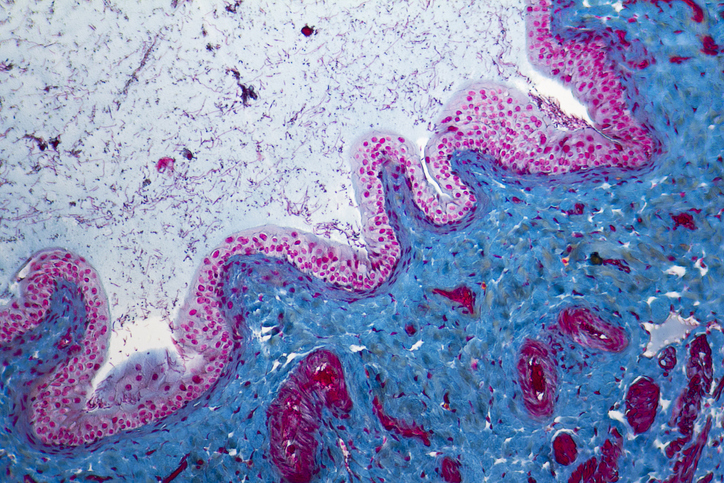
A high number of dominant B-cell receptor (BCR) clones in peripheral blood accurately predicted high-risk rheumatoid arthritis (RA) patients in a new study presented at the annual American College of Rheumatology meeting.
Researchers used next-generation B-cell receptor sequencing on 129 RA-risk patients. They identified highly expanded clones (HECs), or dominant BCR clones, and labeled patients as BCR-positive if peripheral blood presented ≥ five dominant BCR clones at baseline.
https://twitter.com/ALGaffoRheumMD/status/1054045192637083649
RA-risk individuals who developed arthritis within three years had more dominant BCR clones at baseline than RA-risk patients who did not develop arthritis (10.5 ± 5.2 vs. 2.0 ± 2.4; mean ± SD; P < 0.0001). At three years, none of BCR-negative RA-risk patients went on to develop arthritis, compared with 32 (71%) of the BCR-positive individuals (estimated risk ratio [RR]: 120.1; 95%-CI: 7.5 – 1917; P < 0.0001). The more BCR clones a patient had, the higher their risk of arthritis. Researchers divided BCR-positive patients into two groups: five to eight HECs (BCR-medium, n = 23) and ≥ nine HECs (BCR-high, n = 22); at three years, the BCR-high group had a significantly higher arthritis risk than the BCR-medium cohort. The presence of ≥ nine HECs was associated with a 91% predictive value (20/22).
#ACR18 #plenaryI identifying pts at high risk for imminent onset of RA and then target to prevent. Expansive clones of B cell repertoire Cohort of pts +ACPA but no arthritis BCR test. Sens 100% Spec 87%. PPV 71%. NPV 100%. As Number of BCR+ clones increase and more risk
— Marie Kuchynski MD (@Doctorkuch) October 21, 2018
Study author Niek de Vries, MD, PhD, said, “In my view, a positive test might be an indication for preventive treatment and retesting at one year to evaluate the treatment effect.”
https://twitter.com/DrMAUrsani/status/1054044350580187136
“I think it’s very important to realize that what we test is the migration of B cells or plasmablast-like cells through the blood at the moment that we’re testing,” Dr. de Vries, a rheumatology professor at the University of Amsterdam, said. “This is completely different from a serological assessment of antibody production by plasma cells which are present in the bone marrow, which changes very little despite effective treatment. In contrast, if we test B cell migration while a patient gets corticosteroids we see an immediate disappearance of all these cells. So it’s a different parameter.”
Rheumatoid Arthritis Patients with Low Disease Activity Still Have Flareups
Association of anti-RNP with HLADR4 and its prevalence in rheumatoid arthritis patients
Unique Imaging Sets Palindromic Rheumatism Apart from Rheumatoid Arthritis
Therapeutic Interventions to Prevent and Delay Rheumatoid Arthritis Onset
Sources: Rheumatology News, American College of Rheumatology







 © 2025 Mashup Media, LLC, a Formedics Property. All Rights Reserved.
© 2025 Mashup Media, LLC, a Formedics Property. All Rights Reserved.